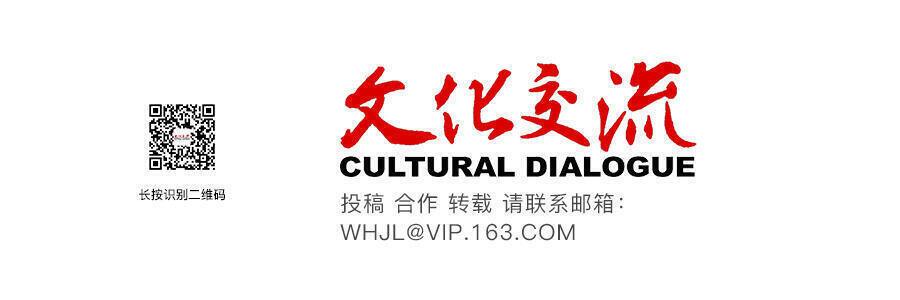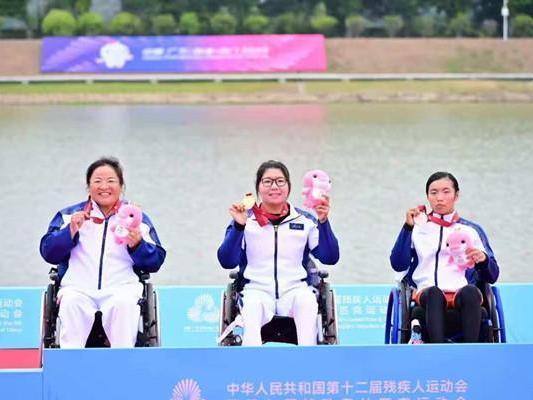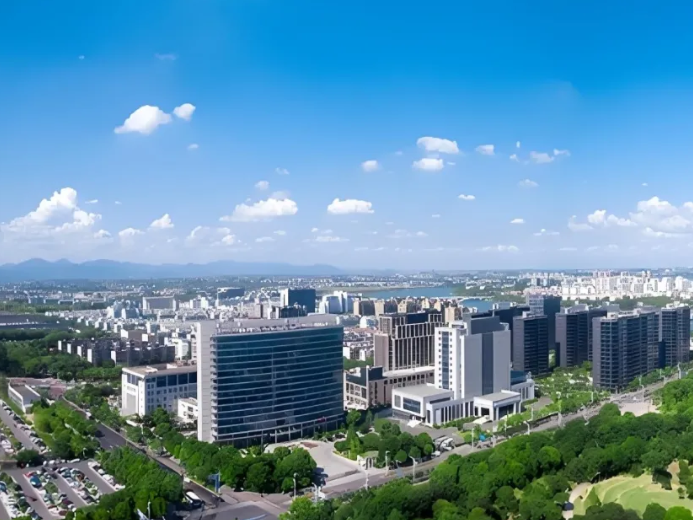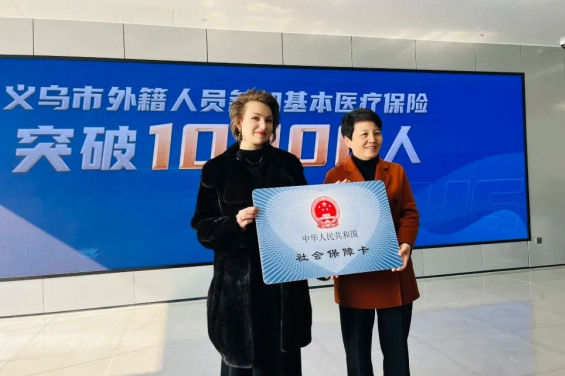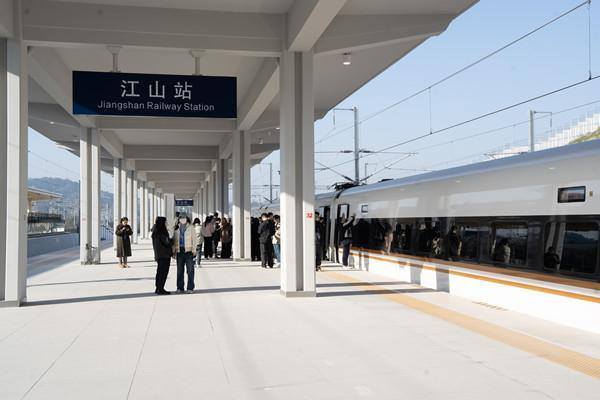在澳大利亚开健身馆开推拿诊室的布鲁斯,连续20年在浙江省中医院学推拿。已深得病人信任的布鲁斯,成了中国老师的得力助手。
布鲁斯又来中国了。
清晨,他照例先到西湖边打上一会儿太极拳,8时前准时回到医院。他熟练地洗手更衣,穿上印有“浙江省中医院”字样的白大褂。时隔一年,他又一次行走在古色古香的推拿科走廊里,迎面而来的每一位中医师、药师,他都能叫上名字,人们见着他,也总会亲切地问候一声:“Bruce, see you again!”
过去的近20年,浙江省中医院这个小小的诊室,是澳大利亚人布鲁斯最熟悉、最牵挂的地方。每年,他总是如期往返中澳两国之间,在这里,他跟着中国的中医师们学习针灸推拿、望闻问切。博大精深的中医药文化,就在手指拿捏之间、在百味甘苦之中流淌……
每年慕名而来省中医院拜师学医的“洋面孔”不在少数,布鲁斯是其中最有恒心的一位。
“因为这里是中国,因为我很喜欢中医。”最近,笔者与布鲁斯在省中医院推拿诊室外相约一见,整整一个下午,他用母语英文向笔者讲述着自己的中国故事

迷恋中国功夫的小伙子
故事的开始,颇有几分戏剧性。
上世纪60年代,少年布鲁斯生活在英国的一座小城。彼时,每逢周末的夜晚,小城的电影院里常会放映有关中国的影片。荧幕前,李小龙、洪金宝、成龙等功夫影星的每一个动作、神态都深深感染了布鲁斯。
“对年少的我而言,中国功夫的魅力是不可言喻的,它带我认识了古老而美丽的中国。”
布鲁斯说着,便掏出随身携带的ipod播放器,几十年过去后,他的播放器里依然珍藏着《咏春》等中国功夫片。由于受到中国功夫的影响,他11岁时便开始在英国当地拜师学习中国功夫。
那时的英国,中国风乍起,武术馆、太极馆、中医馆等相继出现在大街小巷,并融入当地人的日常生活。在异国他乡,中国武术这一古典武艺,也恰巧成为了传播中医药文化的桥梁。
刚开始学中国功夫时,布鲁斯非常好奇,为什么不少功夫电影中,都会出现中医的场景。直到他的功夫老师告诉他,中国功夫绝对不止有“力道”那么简单。习武之人举手投足间,十分讲究刚柔并济、内外兼修,这其中,蕴含着中国文化的深厚精髓,包括中医的经脉理论、中国人的处世哲学等。
从那时起,中医这个字眼深深映入了布鲁斯的脑海中,中国这个相隔近万里之遥的东方国家深深吸引了他。十余年后,苦心学习中国功夫的布鲁斯成为了当地小有名气的功夫老师。当地的人都知道,一个从未来到中国的人,在努力传播着中国传统文化。
然而布鲁斯并不满足于此。常年与中国功夫打交道,也让他对中医产生了强烈的向往。“我还是想到中国去,学习真正的中医!”

凌晨4时起床的洋学生
从上世纪80年代起,中医也开始走出国门,走向五湖四海。在省中医院,已有世界各地的留学生们慕名来此学习中医,这里逐渐成为了对外传播中国中医药文化的一扇窗口。
时间走到2001年,布鲁斯与自己的英国好友艾罗在网上检索到了省中医院正在招募留学生。很快,两人发出了一封饱含热情的邮件,表达了自己想要到中国学习中医的深切愿望。
很快,这封邮件漂洋过海来到中国。省中医院推拿科副主任中医师叶树良立马给出回复:“Welcome to China!”
熟悉省中医院的人都知道,无论春夏秋冬、寒来暑往,总能看到留学生们在这里潜心学习。2001年的秋天,布鲁斯成为了其中的一员,师从叶树良。
布鲁斯依然记得第一次来到省中医院推拿科的情形:一位位面带痛苦的病人走进诊室,技艺娴熟的中医师们几乎没有借助什么药物,凭借过硬的功底,精准找到穴位,推、拿、提、捏、揉等一系列动作过后,病人脸上痛苦的表情就渐渐消失了。
“这太神奇了!”布鲁斯说,虽然中医提倡的理念与西医几乎完全不同,却一样能抚慰病痛中的人们。这样的场景,再一次如同儿时看到的电影画面一般,深深打动着他。
然而,熟知中国功夫的布鲁斯很快发现,要领会有着数千年历史的中国中医药文化,并非易事。对一位土生土长、没有中医学背景的外国人来说,要如何理解中医的天人合一理念?如何把医学与人体、与自然紧密结合在一起?它如何几乎不借助药物,通过医师娴熟的手法为病人解除痛苦?
“太难了!”布鲁斯感慨道,从小接受西方文化的自己与中国传统文化之间的距离,远远超过了地理上的近万公里。
在叶树良的印象中,自己的“洋学生”布鲁斯是极其勤奋的。每年到中国学习期间,他总是坚持凌晨4时半起床,到西湖边练习完太极之后,就早早来到医院温习头一天学习的知识,然后做好出诊前的准备。通常情况下,跟班学习的留学生不能独立行医看诊,布鲁斯通过观察、模仿熟悉推拿技巧,渐渐地在言传身教之间,他能够辅助中国医师为病人治疗。
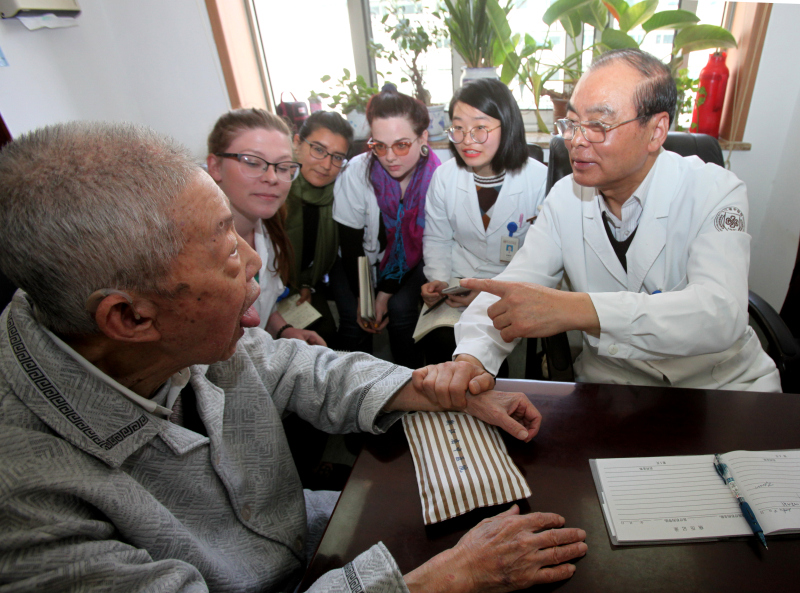
刚开始,医院里的朋友问起布鲁斯是否知道中国成语“学无止境”的意思,布鲁斯摇头表示不解;在年复一年的学习中,他深刻领会了其中的内涵。每逢有人夸奖他勤奋努力时,他便会用中文打趣道:“学无止境嘛!”
近20年来,布鲁斯坚持每年抽出一个月的时间来中国学习中医,从未落下一次带教。现在的他渐渐掌握了中医的精髓理念,叶树良说,他的推拿手法已经高于一般的中医师。
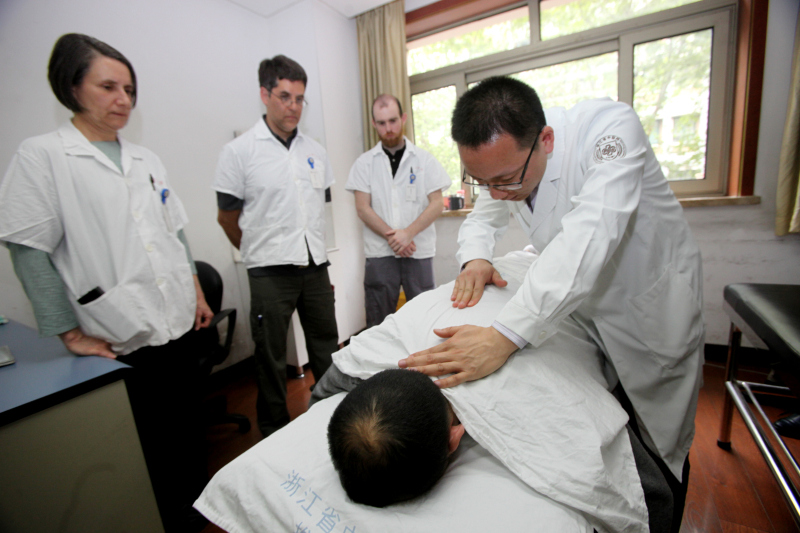
巧妙入乡随俗的推拿师
如今,生活在澳大利亚的布鲁斯,在自己的健身馆边开起了一间推拿诊室,他在解除人们病痛的同时,也以一己之力在异国他乡传播着中医药文化。
布鲁斯说,在自己生活过的英国和澳大利亚,在街头巷尾出现中医诊所已不再是新鲜事物。这些年来,他一边欣慰于越来越多的人开始喜欢上这门来自中国的传统医学,一边又马不停蹄地开始思考中医的本土化。
细心的布鲁斯在出诊过程中发现,推拿师在对病人头颈部位正骨时,经常会发出“咔咔”声,这件在中国推拿诊室里稀松平常的小事,却令不够了解中医的澳洲人难以接受。
“中国与澳洲相隔万里,传统文化要入乡随俗并非易事。”布鲁斯说,我不希望人们在西医治疗效果不好时才选择中医。中医在中国延续了数千年,一直守护着人们的健康,它一定有自己特殊的价值。
在详细咨询过叶树良之后,布鲁斯结合人体构造与推拿技法,创新了正骨的手法:他按住病人的头部,让病人自己配合张嘴、侧脸,适当用力后,就能达到传统正骨的效果。
现在,已经58岁的布鲁斯依然散发着活力和热情。省中医院的老朋友们问他:“你还会再来中国吗?”他总是毫不犹豫地回答:“当然!”
“你为什么如此喜欢中医?”笔者很好奇。
布鲁斯的回答有点出乎的意料:“其实,我喜欢的不仅是中医,我更喜欢中国。”他说这20年,他自己也见证了这个国家翻天覆地的变化:街道旁高楼林立,夜晚霓虹闪烁,西湖一年比一年美丽,医院的诊室变得敞亮有序,看病就医也变得更方便了……
“我想,中国的变化不止于此。”布鲁斯今年的学习就要结束,在访谈结束前,他又一次告诉笔者:“我一定会再回到中国!”
(本文图片由于伟拍摄)
Bruce’s 20 Years of TCM Studies
Leader Andrew Moses, a 58-year-old Australian, has visited Hangzhou once a year since 2001. He operates a massage clinic and a fitness center in Australia. He receives regular training at Zhejiang TCM Hospital in Hangzhou. TCM stands for traditional Chinese medicine.
To his colleagues at Zhejiang TCM Hospital and his Wushu friends in Hangzhou, he is Bruce. He grew up in the 1960s in a small city in UK. He developed a strong passion for Chinese Kungfu after seeing some Kungfu films. Back then, Kungfu centers and TCM clinics were not an unusual sights in the UK. At 11, he began to take Kungfu lessons. One day he asked his kungfu master why there were TCM doctors in kungfu films. Then he learned that Kungfu is not a brutal power play, that it embodies Chinese philosophy, that it couples force with mercy, that it enhances a practitioner’s heart and soul, and that it teaches a practitioner how to live wisely and how to treat friends and enemies. After years of practicing and studying, he became a kungfu master and he called himself Bruce Lee, the famous Chinese kungfu star in Hollywood films.

After learning in 2001 that Zhejiang TCM Hospital was recruiting international students, Bruce wrote an email to the international student office of the hospital. In autumn 2001, he became a student there and studied under the guidance of Ye Shuliang, then an associate chief doctor at the Massage Department of the hospital.
Bruce still remembers the first time he stepped into a massage therapy room and watched how TCM massage doctors worked there. The massage doctors accurately found acupuncture points and applied massage moves. And miraculously, he saw how pain disappeared from the faces of these clients after a massage treatment.
He thought it was amazing. He has long since come to understand that, though TCM’s philosophy looks different from the ideas of western medicine, TCM works effectively in some aspects. When he became aware of this, he felt excited. However, he soon found it difficult to approach some essentials of TCM, which has a history of thousands of years. How does a foreigner without any previous knowledge of Chinese culture and philosophy understand Chinese concepts that nature and man are one and that TCM offers effective therapies for pains and diseases?
He settled down to work. A dedicated student, he follows a strict schedule for his work and life in Hangzhou during his one-month-long study every year over the past 18 years. He gets up at 4:30 am in the morning. After practicing Taiji at a park by the West Lake, he arrives at the hospital to study and prepare himself for a day’s work. Then he follows Ye Shuliang around to watch how the masterworks. As an international student, he can’t work as a doctor. He observes and takes note of what his master does and tells him. He has learned a great deal. Nowadays, he works as an assistant to his master while studying at Zhejiang TCM hospital.
The lessons he has taken from his master over the past 20 years have opened his eyes to some sophisticated concepts of TCM. Ye Shuliang considers Bruce as a better massage therapist than average TCM doctors in China.
When he first started TCM massage, Bruce was once asked by his Chinese colleagues if he understood the Chinese idiom that learning is an endless process. At first, he shook his head and said no. Now he understands what the idiom means. He now uses it in response to his colleagues when they say they are surprised by his amazing progress in the study.
Bruce says it is not unusual to see a TCM clinic in the UK and Australia. He is happy to see more and more people begin to find traditional Chinese medicine acceptable. In his practice, however, he understands he needs to localize TCM so that his massage clients can receive treatment better. In the massage department of Zhejiang TCM hospital, he sees how a doctor massages a client’s neck and he has long since got used to the sounds produced by the neck bone in treatment. However, when he first made such a sound from a client’s neck, the client was astonished. Bruce understood that he needed to make some adjustments. He consulted Ye Shuliang. After some discussion sessions and experiments, he came up with a new technique for neck bone treatment. Nowadays, a client opens his mouth and turns his head while Bruce adds some well-controlled pressure, the neck bone is well treated without giving a terrifying sound.
At the end of his one-month-long study at Zhejiang TCM Hospital in 2019, he was asked if he would come back next year. “Of course!” he said without hesitation.
Over the past 20 years, he has learned in-depth about TCM massage and he has witnessed a sea change in Hangzhou. “I like TCM and I like China,” said Bruce. He has witnessed the huge changes the hospital not far from West Lake has undergone over the past 19 years.
(Photos by Yu Wei)
